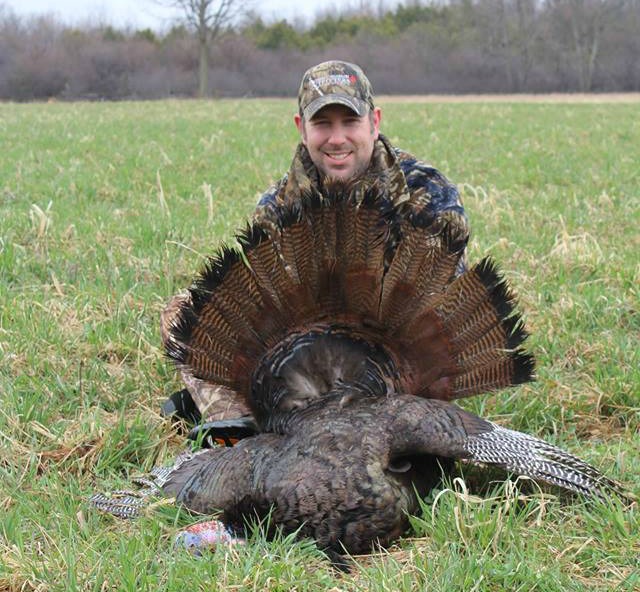Quebec Black Bears: A Classic Big Game Adventure
Dave Maas 06.28.17
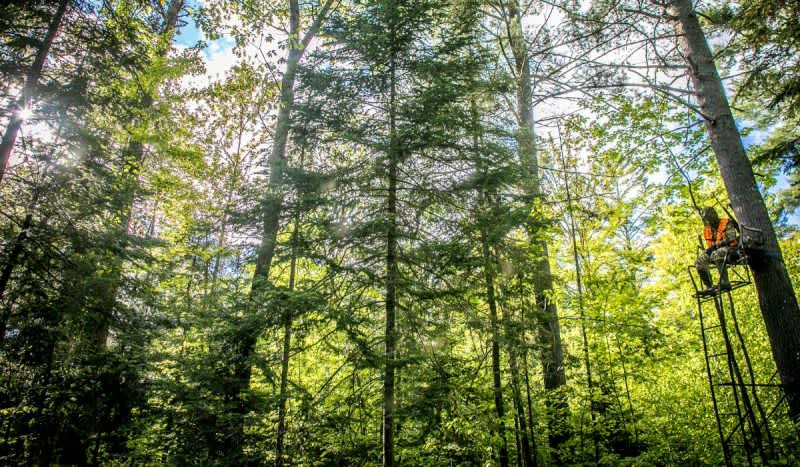
Each spring I pursue wild turkeys in a few Midwestern states, and while the biggest of North American game birds helps scratch my hunter’s itch, I’m far happier when I have a black bear hunt on my spring schedule.
Twice now I’ve had the opportunity to pursue black bears in Quebec. The first was a decade ago in central Quebec (Laurentides Wildlife Reserve), and I carried a bow. I passed on a few small- to medium-size bears that week, and when a big mature boar finally visiting my bait site, the shot angle was less than perfect, so I didn’t release an arrow. Being at full-draw – twice – on a big bruin at 20 yards is a thrill, and even though I didn’t tag a bear, my memories from that hunt are vivid reminders of a great week spent in the north country.
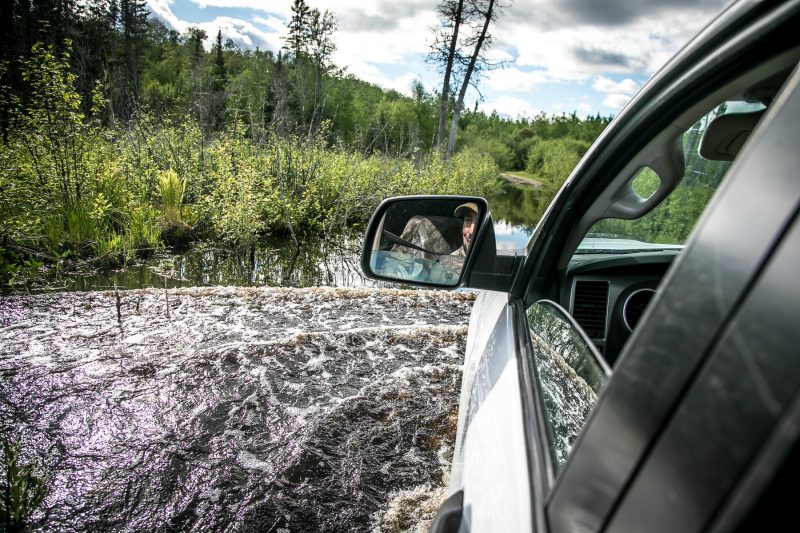
My most recent bear hunt to Quebec was hosted by Rob Argue of Eastern Canadian Outfitters (ECO). Instead of a bow this time, I chose a Savage Arms Model 11 DOA Hunter XP bolt-action rifle for the hunt, and the 308 Win. was fitted with a 3-9X Bushnell Trophy riflescope. The rifle’s detachable magazine was loaded with 150-grain Non-Typical Whitetail ammo, which is a new offering from Federal Premium. Because adult boars in this region usually weigh 150-250 pounds, I felt confident choosing ammo that was designed to anchor big whitetail bucks, which weigh about the same.
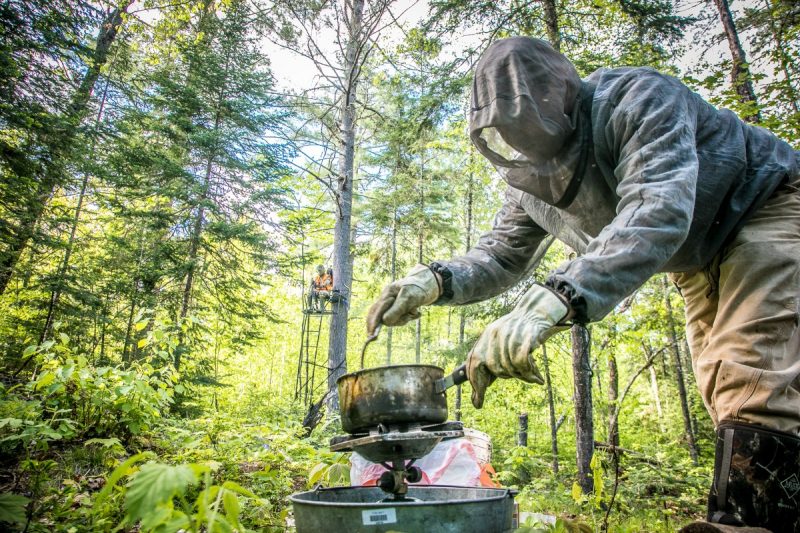
If you’ve never hunted black bears over bait, let me assure you that it isn’t a slam-dunk. Mature black bears don’t grow old by lumbering into every bait site that appears in their home range during daylight. Big bears are often wary, visiting bait sites well after dark, when hunters are back in their beds sleeping. In fact, thanks to a dependable scouting cam such as the new DS4K model I used from Stealth Cam – this cam shoots Ultra HD 4K video! – you can keep tabs on bear activity around a bait site 24/7. But let me warn you – what you see, and when you see it – will both fascinate and frustrate you. (Be sure to tune into OHUB soon for my review of the new and amazing Stealth Cam DS4K; amazingly good!)

That huge boar that ripped apart the bait site and left a monster track in the mud? Yes, a scouting cam will record his every movement and vocalization, but don’t be surprised if his visits are many hours after shooting hours have ended.
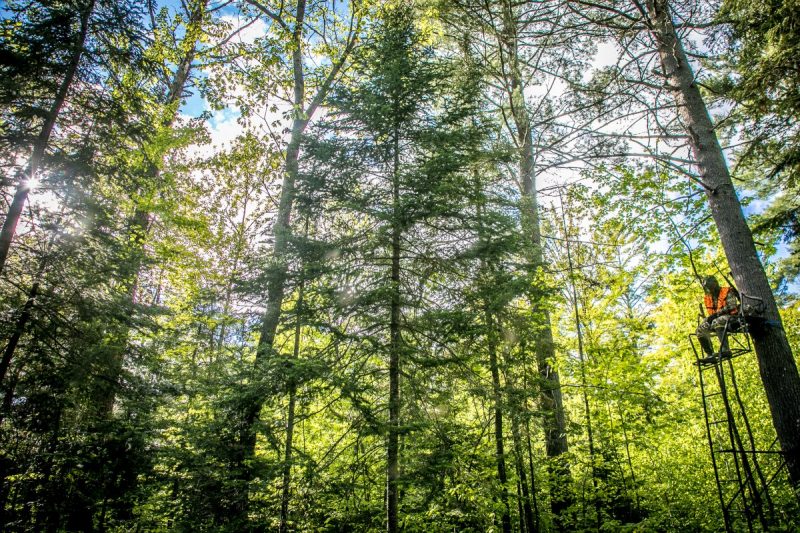
As I write this story, I’m sitting in a two-man ladder stand about a 30-minute drive from Rob’s camp along the shore of Lac Mer Bleue. The hunt was planned for six afternoon hunts, but one of them was a total rainout, so I’ve had five, and this one is my last. Sitting beside me is good friend Matt Addington, who joined me on this adventure to shoot photographs and video, as well as fish for smallmouth bass. (Click these links for my articles on the amazing fishing available in Rob’s exclusive outfitting territory, including Lac Mer Bleue and Rob’s remote Lake X, Lac Boulard.)
Like I said earlier, black bear hunting – even over bait – isn’t a sure thing. And it’s a challenge. Now, I know what you’re thinking: How tough can it be to sit on a ladder stand and kill a bear over a barrel filled with pastries and several other sweet treats?
The challenge – assuming you don’t succumb to bear fever – isn’t making a short-range rifle shot on a standing bear. In fact, unlike taking a whitetail with a bow, the shot itself on a hunt such as this one isn’t nearly as difficult as everything leading up to that moment. Let me try to explain.
As I write this article, the temperature is about 80 degrees (F), so sitting in the woods dressed in camo from head to toe isn’t exactly comfortable. In fact, it’s downright hot. I’d love to be wearing a T-shirt and shorts, but I can’t due to the zillion mosquitoes and biting black flies landing on 100 percent of my body. I’m wearing lightweight Sitka Gear in the new Subalpine camo pattern, and it’s awesome. The clothing is keeping me hidden from approaching bears, and the high-tech fabric is keeping me as cool and comfortable as possible.
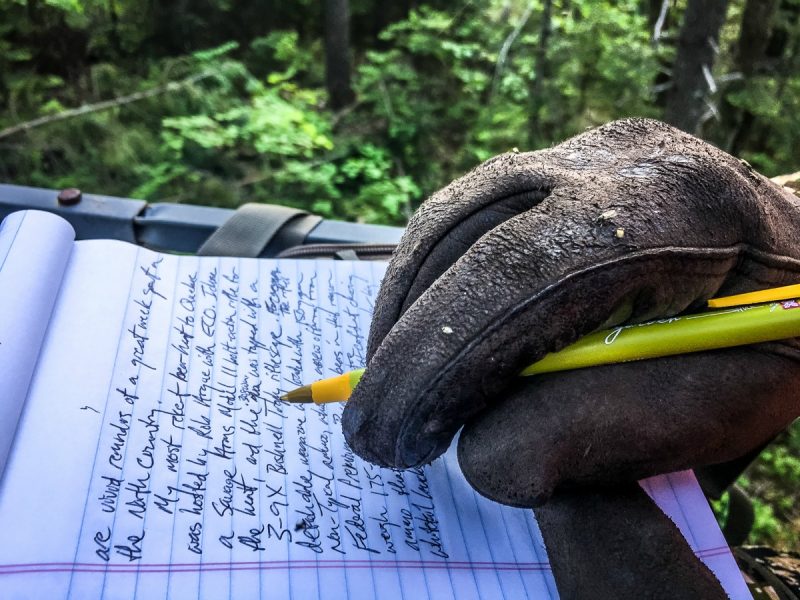
But I must return to the bugs: The true challenge in tagging a good-sized black bear during spring is in your ability to handle the bugs, both physically and psychologically. What do I mean by that statement?
Many diehard hunters, some of my best friends in fact, cannot tolerate the bugs to succeed on a spring black bear hunt in Canada. The number of black flies buzzing around your ears and face – everywhere really – is impossible to describe in words. A headnet is mandatory, and all the guides in camp wear a mesh bug suit that covers their entire upper body.
To be very specific, I’m wearing leather gloves because mosquitoes and black flies can’t bite through them. Even though air temps are high, I’m wearing a Sitka neck gaiter, but instead of wearing it over my neck, I have it over my ears and top of my head. A lightweight baseball-style cap sits over the gaiter, then a headnet over everything.
Why the need for a gaiter over my ears on a hot day? Because the flies can bite through the netting any spot where it touches your skin, and the most common place for this to occur is on the top of your ears. The flies – thankfully – can’t bite through a combo of headnet and gaiter.

I’m wearing uninsulated LaCrosse Grange boots because trails leading into the bear stands are often filled with standing water due to heavy spring rains and beavers that seem to construct ponds every 100 yards in this country.
I have about 4 hours until the end of legal hunting time tonight. To occupy his time in the two-man ladder, Matt is reading Peter Hathaway Capstick’s classic “Death in the Long Grass” on his phone. I’m doing a bit of writing and trying to tolerate the bugs. As I said, if you have the smallest hole in your headnet, or some other chink in your armor, the bugs will find it and eat you alive. And I’m not a doctor, so I can’t explain the reasons why, but a bite from one of these black flies almost too small to see leaves behind an itchy welt nearly as large as a dime. Nasty! I know because I have many of these welts on my ears – before I discovered the “neck gaiter turned into ear protector” trick.

So, if you can handle the heat . . . and the bugs . . . you have a prayer. The constant buzzing in your ears will make it difficult to hear an approaching black bear, and the bugs seem to get worse the harder you try to decipher woodland noises.
And here’s a tip: Black bears are almost always totally silent, and they have a way of coming in from behind you, no matter the wind direction or position of the stand.
During the 2017 bear hunting season, outfitter Rob Argue placed 24 bait sites, and all but one of them quickly was hit by bears. “I like to space my baits at least 1 mile apart,” he said. “That way, bears are less likely to hit more than one site.”
Instead of hopscotching from one bait to the next each afternoon, Rob prefers that his hunters sit for 3 consecutive days at an active bait site. “You just never know,” he said. “One night a bear might skip a visit for an unknown reason, or the wind is wrong, or maybe they smell the hunters and decide to wait back in the bush. But if a hunter can commit to sitting in one stand for 3 consecutive afternoons, especially if the weather is good (warm and not too windy or rainy), the hunter stands a good chance of seeing a decent bear.”
As I said, this is my final sit during my 2017 bear hunt with ECO. I’ve had a fantastic time so far, and with 2.5 hours remaining in tonight’s hunt, I’m hopeful.
In my experience, a mature boar rarely approaches a bait site until the last 15-30 minutes of legal hunting time, so I highly recommend bringing along a good book to help pass the time – and keep your mind off the bugs!
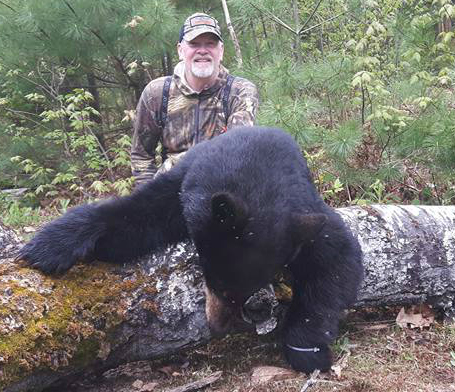
Final hunt update: Matt and I had an exciting conclusion to our 2017 Quebec adventure. With 90 minutes of hunting time remaining, we heard branches breaking directly behind our ladder stand. Didn’t I say that bears almost always approach from behind? Crazy!
To make a long story short, a 150-pound-class bear finally appeared beneath our ladder (photo below). It walked toward the bait and stopped only 5 yards from the base of our ladder to look at us in the tree. At that point, I wasn’t sure if it was a boar or sow. Based on the amount of noise we’d heard behind us, both Matt and I figured it could be a sow with cubs.

Instead of proceeding to the bait, the bear took a hard left and then spent 5 minutes at 60 yards rolling on the ground in heavy cover. I’m not sure why – perhaps it was rolling around in food scent from a preview visit to the area? In any case, the bear finally approached the bait from left to right, but this time it walked into the open for a second or two (photo below), and I still wasn’t convinced it was a boar.
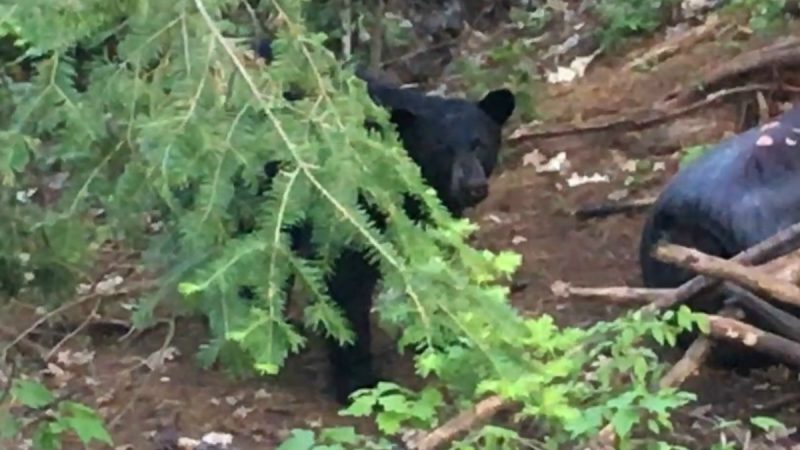
I expected cubs to come flying out of the thick cover to join their mother. As a rule, outfitters prefer their clients to give a bear a minute on a bait site to determine whether it’s a sow with cubs. (In Quebec, it’s illegal to shoot a sow with cubs.) As it turned out, the bear melted back into thick cover, and it didn’t reappear until 15 minutes after legal hunting time had ended, and this time (again), from behind our treestand. It spooked as we exited our ladder stand.
So, it was fun and exciting to look at the bear through my scope, and I certainly could have pulled the trigger when it approached the bait. But my rule is always “better safe than sorry,” and at that point I just wasn’t 100 percent sure it was a boar. And that’s why it’s called hunting and not shooting.
I very much look forward to another visit to Quebec for black bears. And even though I didn’t get a shot during this trip, my Stealth Cam DS4K proved that a monster bear was lurking near one of my stands; check out the video below. And he’ll only be bigger in 2018!
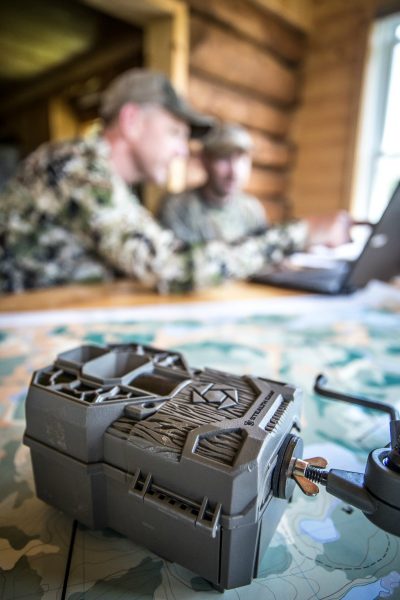
Note about the outfitter: In addition to pursuing black bears, Rob Argue of Eastern Canadian Outfitters also outfits for whitetails, moose, small game and wild turkeys (below). He is also Director of Operations and Outreach for QDMA (Quality Deer Management Association) Canada.
